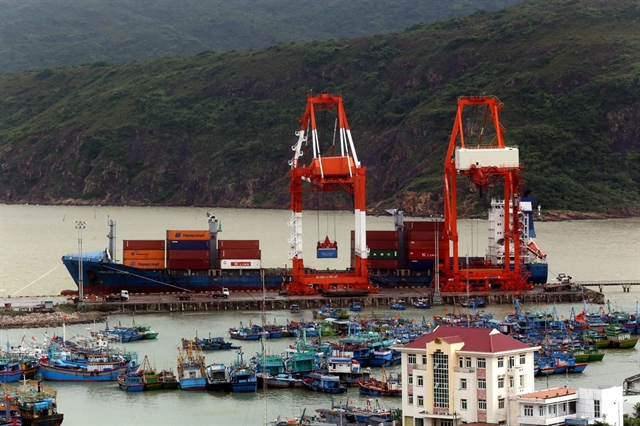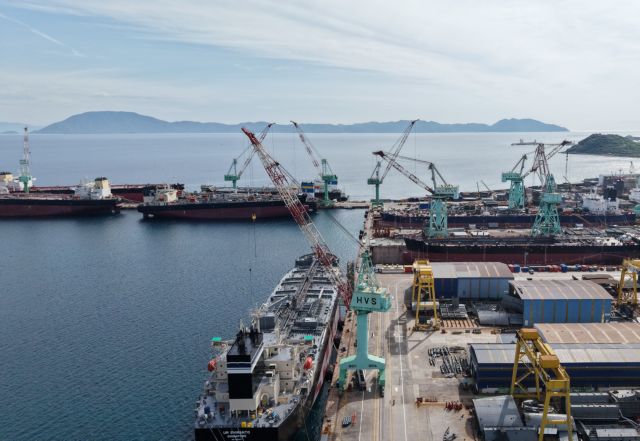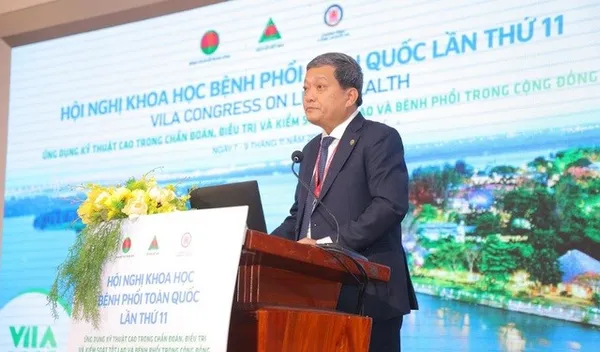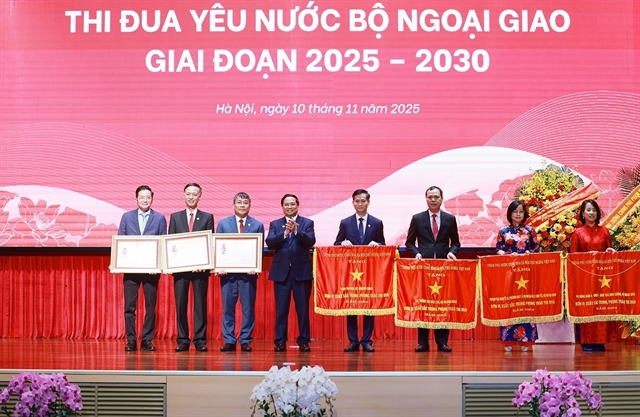 Economy
Economy

 |
| Good containers are loaded on to a ship at Quy Nhơn Port in Gia Lai Province. — Photo baotintuc .vn |
HÀ NỘI — In the wake of the recent provincial merger, coastal provinces across the central region are intensifying efforts to attract large-scale investment projects, with a focus on seaport expansion and logistics.
These initiatives underline the marine economy’s growing role as a driver of regional growth and sustainable development in the new economic landscape.
Hồ Liên Nam, deputy general director of Quy Nhơn Port, said that developing the marine economy into a major regional hub remains a top priority in Gia Lai Province’s economic development strategy.
Quy Nhơn Port plays a crucial role as a gateway connecting Gia Lai and the Central Highlands region to global markets, while also serving as the nearest seaport for southern Laos, northern Cambodia, and Thailand, Nam told baodautu.vn.
To leverage these advantages, Quy Nhơn Port has conducted extensive surveys throughout the Central Highlands to identify key export commodities, including agricultural products, iron ore and construction materials.
It is also expanding its value-added services portfolio, offering freight forwarding for refrigerated containers and starch products, along with multimodal domestic transport solutions for animal feed ingredients and frozen goods, Nam added.
These new service chains not only boost Quy Nhơn Port’s revenue and profitability but also enable the port to strengthen control over cargo sources, stabilise shipping routes, and ensure sustainable growth in the years ahead.
According to Phạm Anh Tuấn, chairman of the Gia Lai Provincial People's Committee, his locality is set to strengthen its position as a vital transportation and trade hub, leveraging its strategic geographical location.
Following the merger, Gia Lai is positioned at the intersection of major national routes such as the North-South Expressway and National Highway 1A. The province will also serve as a key gateway along the East-West corridor, connecting the Lệ Thanh border gate with major ports including Quy Nhơn and Phù Mỹ.
Combined with existing road and air transport networks, these seaports are expected to enhance multimodal transport capacity and improve international trade linkages.
Developing these ports give Gia Lai a competitive edge, improving domestic-international trade links and attracting more investment, Tuấn said.
International cooperation in the seaport and logistics sectors is also gaining momentum.
During a recent investment promotion programme in South Korea, Yang Jae Sang, Chairman of the Busan Chamber of Commerce and Industry (BCCI), identified the two sectors as a priority for collaboration between Busan and Gia Lai.
Yang singled out Phù Mỹ Industrial Park and Phù Mỹ Port as strategic investment projects attracting keen interest from BCCI. He noted the strong potential for logistics connectivity between Busan Port and Phù Mỹ, which could lead to expanded cooperation in maritime transport, import-export activities and supply chain development.
Beyond Gia Lai, port infrastructure development is rapidly advancing across other central provinces. In Đà Nẵng City, authorities granted principal approval in September for the development of Liên Chiểu Container Port, marking the largest seaport investment ever undertaken in the central region.
Affirming roles in the new era
 |
| A part of Khánh Hoà Province's Vân Phong Economic Zone which is expected to become the country's maritime economic centre by 2040. —VNA/VNS Photo Huy Hùng |
Following the provincial merger, Khánh Hòa Province continues to pursue its ambition of becoming Việt Nam’s foremost maritime economic hub. The province’s international seaport system, including Vân Phong, Cam Ranh, and Cà Ná ports, positions Khánh Hòa as a magnet for foreign investment in the logistics and green industry sectors.
Trần Hòa Nam, vice chairman of the Khánh Hòa Provincial People’s Committee, said the province has finalised key plans for the exploitation and sustainable use of marine and island resources.
At the same time, strategic projects such as high-tech marine aquaculture development are progressing to boost economic growth, Nam told baodautu.vn.
He added that Khánh Hòa’s appeal is further strengthened by investments from major corporations like Japan’s Sumitomo, which has committed capital to energy infrastructure and marine industry ventures.
National Assembly Chairman Trần Thanh Mẫn highlighted Khánh Hòa’s strategic advantages, citing its nearly 500 kilometres of coastline and four renowned bays - Vân Phong, Cam Ranh, Nha Trang, and Vĩnh Hy.
Chairman Mẫn urged the province to fully harness its natural assets to cement its role as the national maritime economic centre, aiming for green, smart, and sustainable development.
Regarding Gia Lai Province, chairman Tuấn said that his province’s new-term resolution prioritises infrastructure and logistics development, with a focus on establishing a logistics centre connecting the Lệ Thanh Border Gate to Quy Nhơn Port.
Similarly, Đà Nẵng City’s resolution highlights marine economy development as a key priority, aiming to build a modern fishing centre. — VNS




